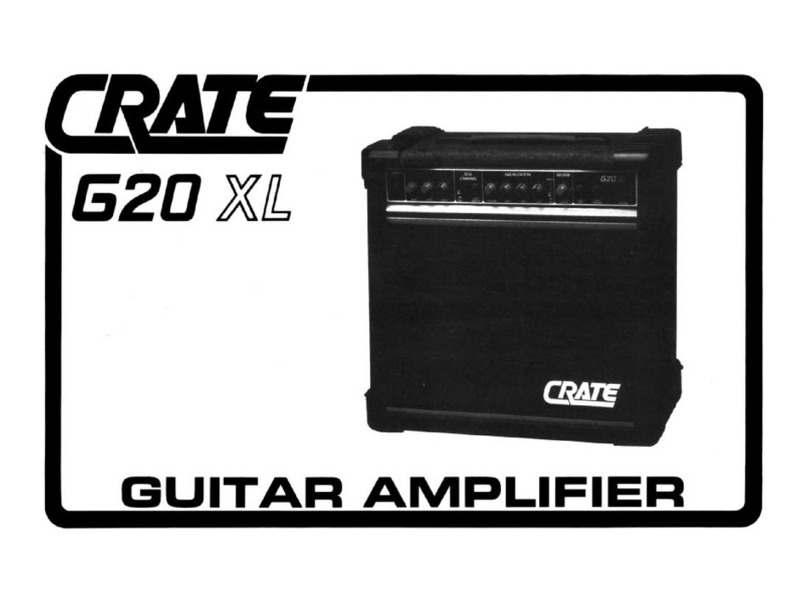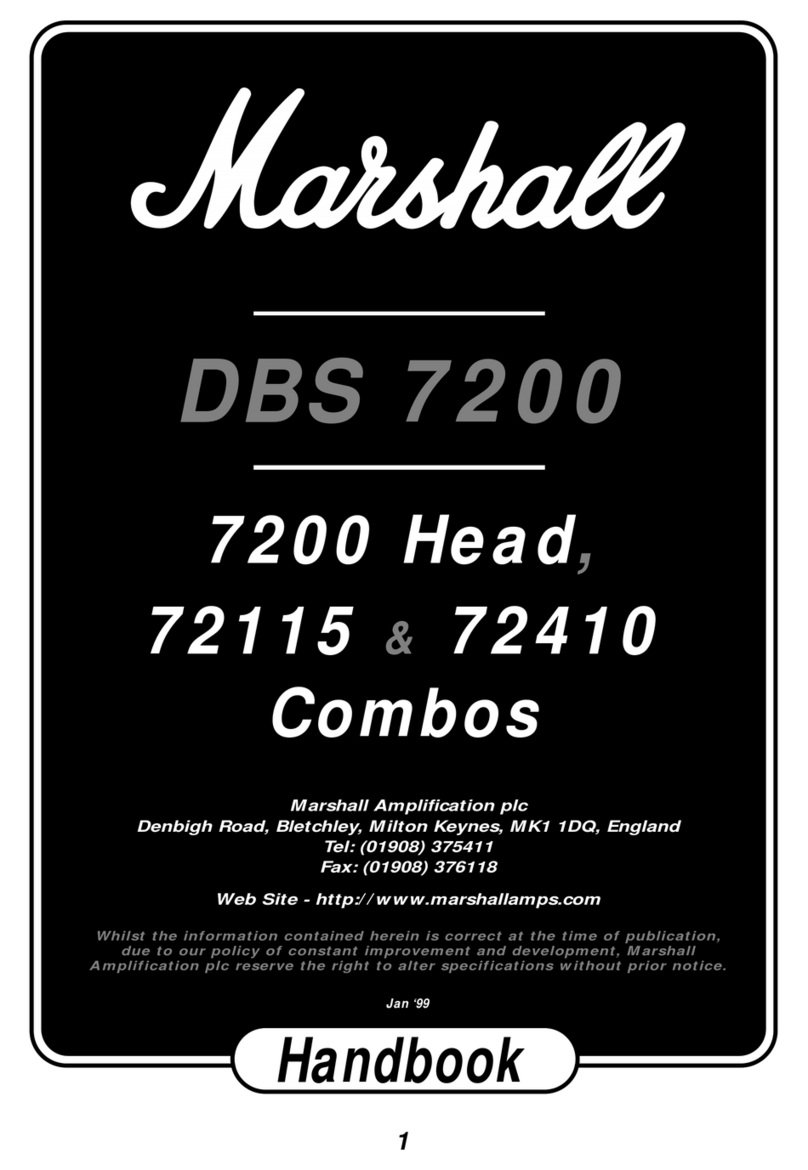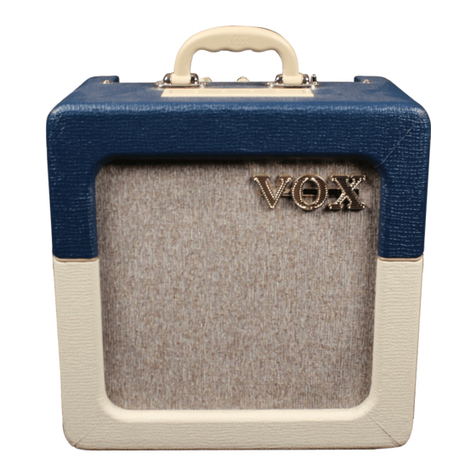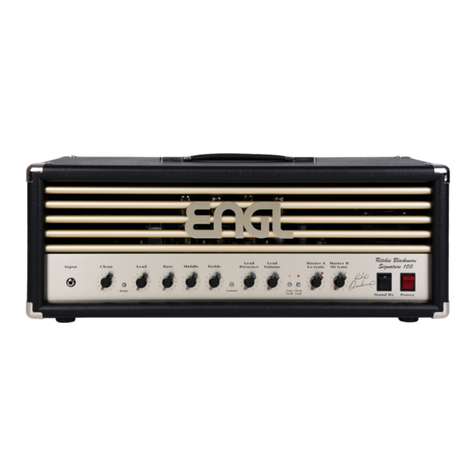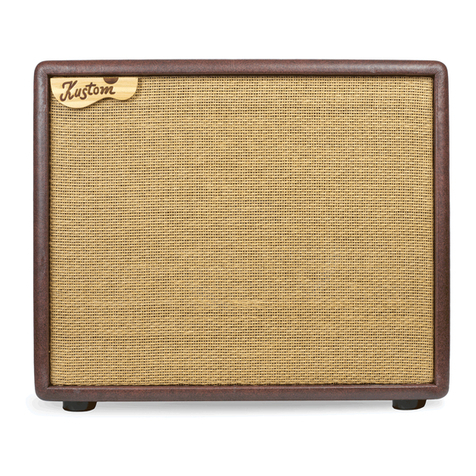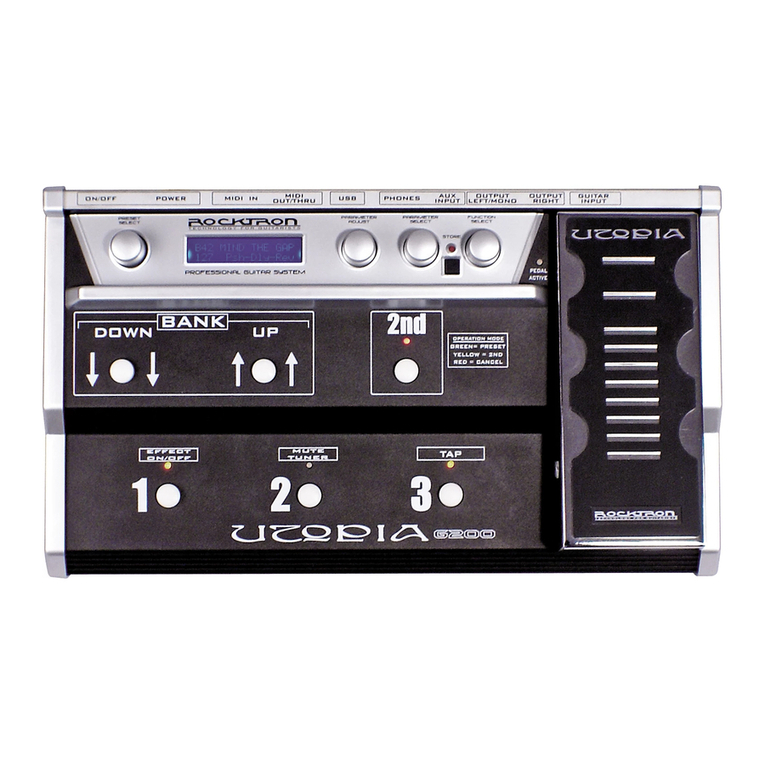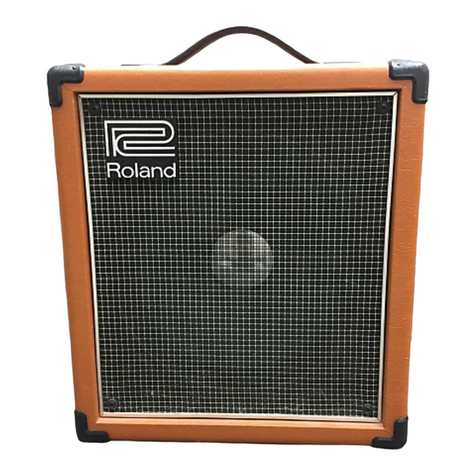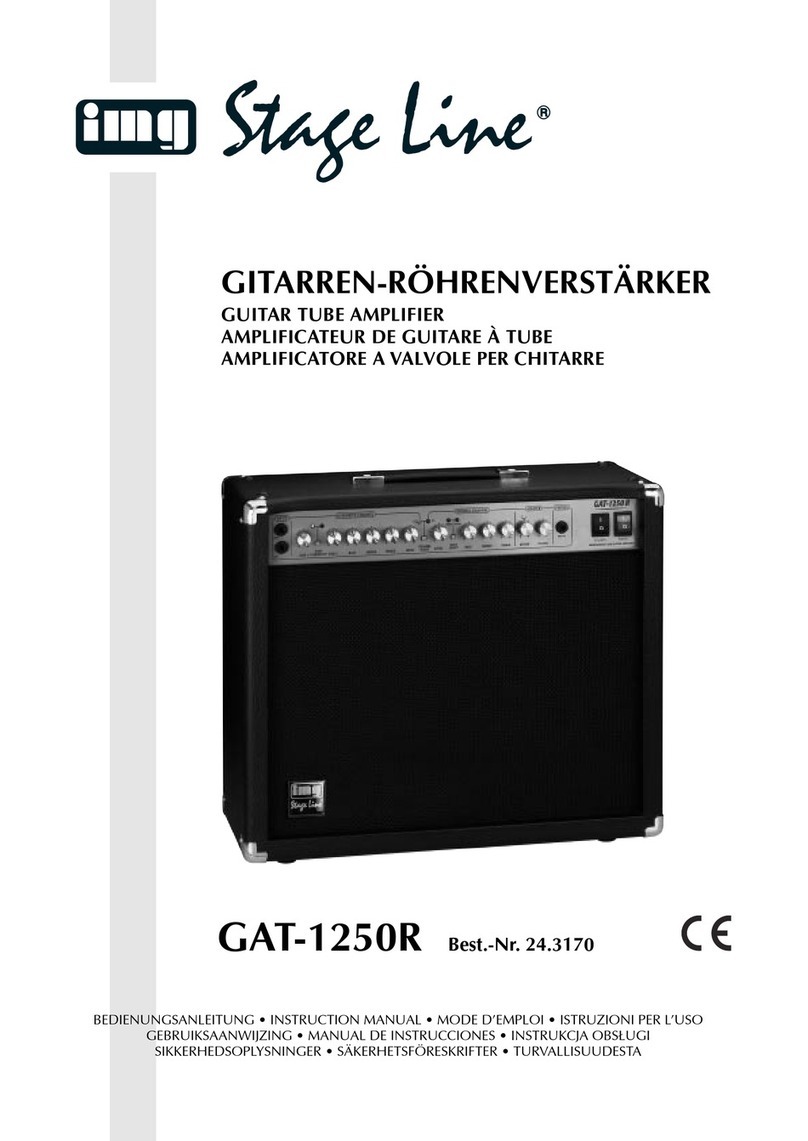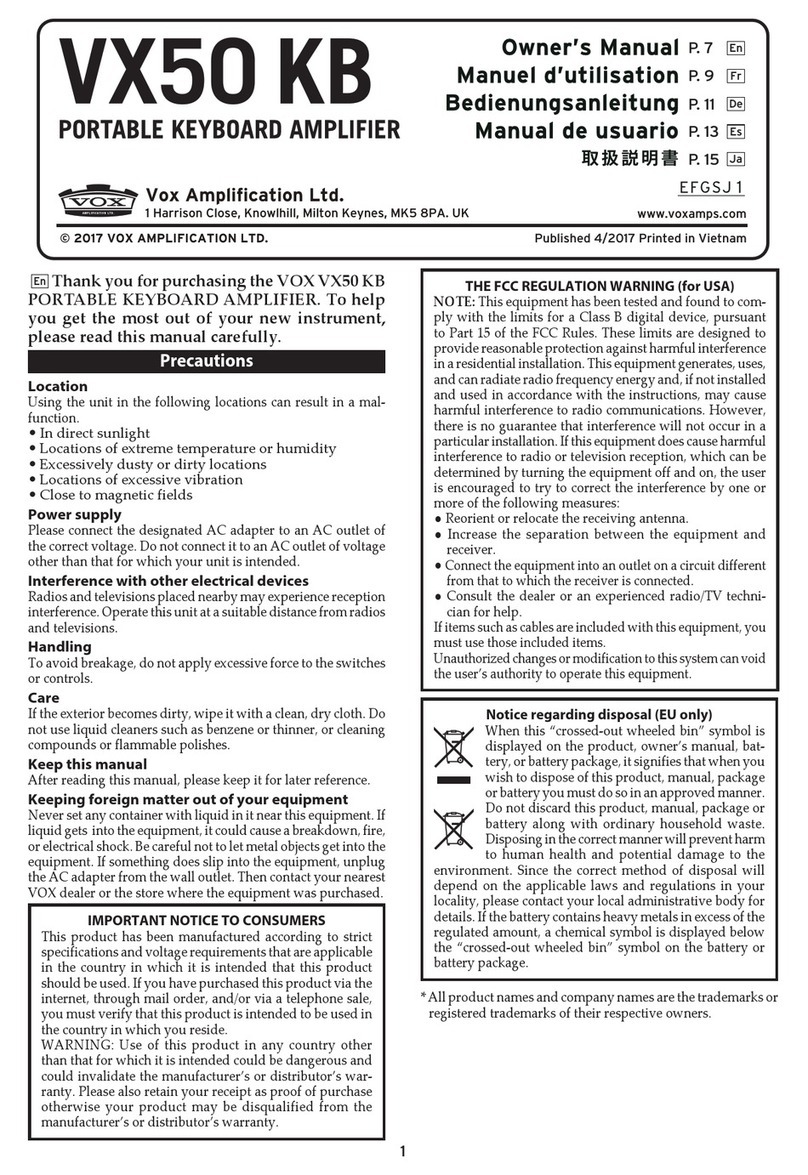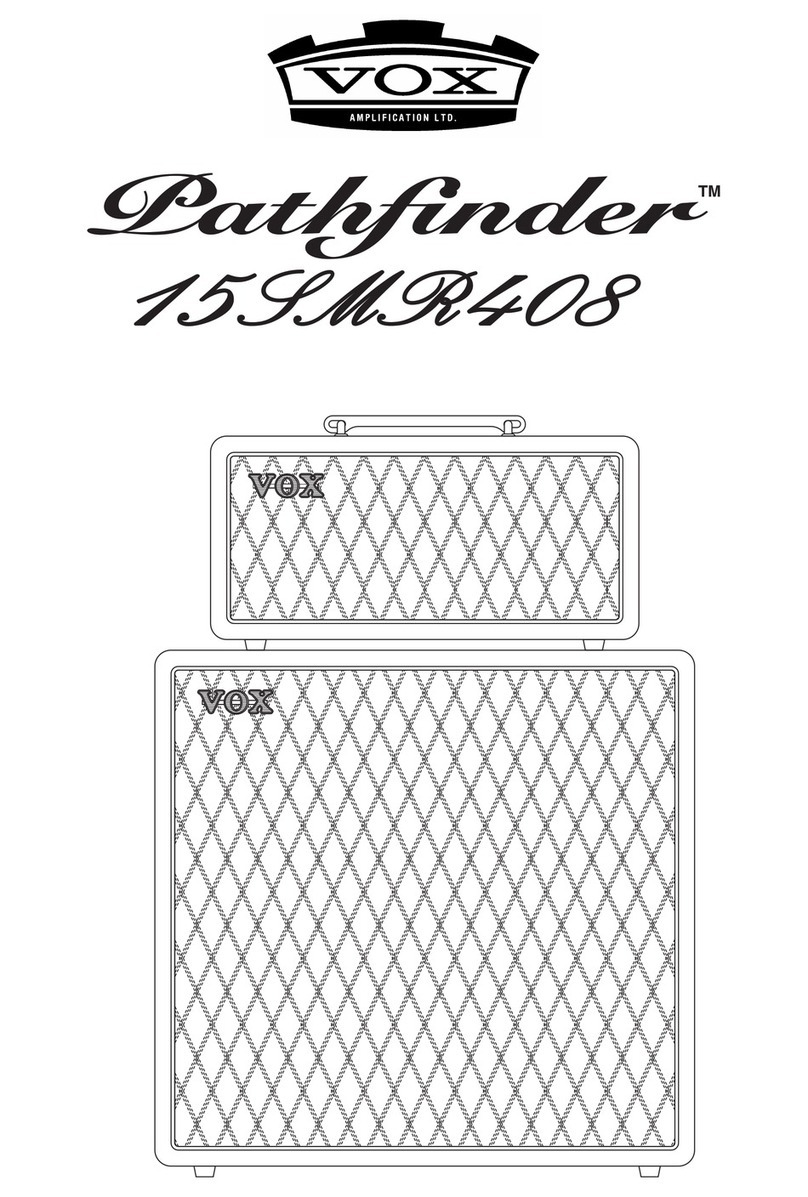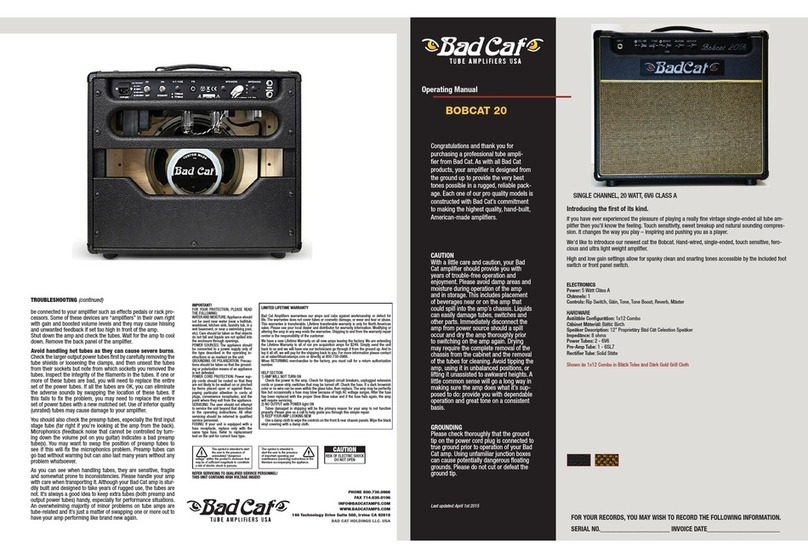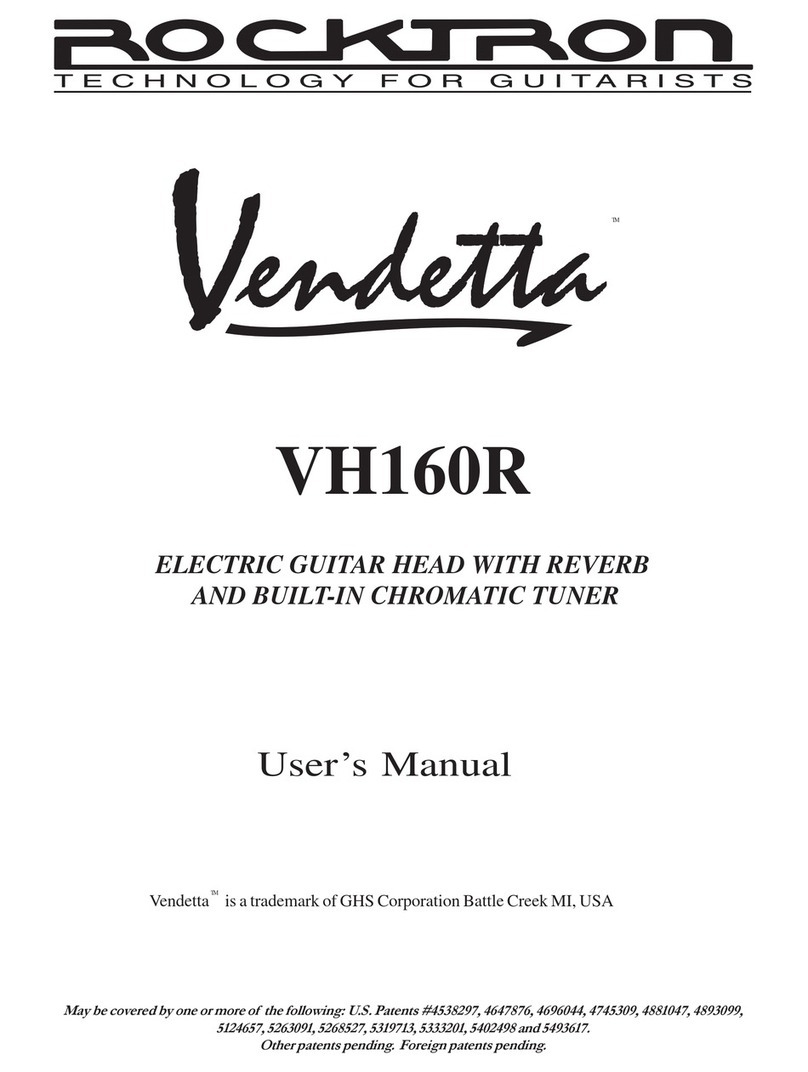Tone King Majesty 15 User manual

Tone King “Majesty 15”
Tone King “Majesty 15” Tone King “Majesty 15”
Tone King “Majesty 15”
User’s Manual
User’s ManualUser’s Manual
User’s Manual
1.0 3/13/2014
Tone King Amplifiers
A division of Premier Builders Guild LLC
4401 Eastern Avenue, Bldg 46 3G, Box 38
Baltimore, Maryland 21224
www.toneking.com

1
Note from the Design
Note from the DesignNote from the Design
Note from the Designer
erer
er
Thank you for choosing Tone King’s “Majesty 15” guitar amplifier. The Majesty is a
genuine milestone for us, as it’s the first Tone King amp that deli ers the best of the
intage British sound.
The Majesty is inspired by the sound of the
early Marshall amps, and you will certainly
hear elements of the old Bluesbreaker, JTM45,
and JMP50 in the sound of this amp.
Howe er, the Majesty is no mere clone of a
intage amp. It is ery much a new design
which captures the essence of those fine
intage amps, but goes further as well.
I used the same approach to the design process
as I always ha e in the past. It all starts with
critical listening, in order to understand the
qualities - good and bad - that define the sound of these iconic intage British amps.
Then, relying simply on engineering know-how and past experience, I de eloped circuit
designs to deli er more of the good and less of the bad qualities, for an idealized ersion
of those iconic tones we all know and lo e. I made no attempt to duplicate the design
or construction of the originals, since my goal was to go beyond the limitations of those
classis designs.
As always, half of the design effort went into the oicing of
the speaker cabinets. The goal was to capture the low-end
thump, chunk, and presence of a certain intage
“basketwea e” 4x12 which is a big part of that sound, but
do it in a smaller, lighter, more con enient package – 1x12
and 2x12. This was the most difficult design I’ e done in
se eral years, since it was so entirely different from the
Fender oicings I had been familiar with. Regardless, I am
delighted with the sound of the Majesty cabs, and I think
they are an excellent match for the amp.
To top it off, I added a number of additional useful features.
I de eloped a special ersion of the Ironman attenuator,
with a reacti e load tuned specifically for this amp, as well
as an extremely transparent effects loop and a ery useful line-out circuit.
I thank you for your purchase of the Majesty,
and I hope you enjoy playing it as much as I
do.
Best Regards,
Mark Bartel
Tone King Amplifiers, a di ision of Premier
Builders Guild LLC

2
Safety Instructions (Important !)
Safety Instructions (Important !)Safety Instructions (Important !)
Safety Instructions (Important !)
1. Please read these instructions, and keep them for reference.
2. Please follow all instructions described here.
3. Do not use this apparatus near water.
4. Clean only with a dry cloth.
5. Do not block any entilation openings.
6. Do not operate near any heat sources such as radiators or heat registers.
7. Protect the power cord from being walked on or pinched, particularly at the plugs
and at the point where they exit from the apparatus.
8. Only use attachments/accessories specified by the manufacturer.
9. Unplug this apparatus during lightning storms or when unused for long periods of
time.
10. Refer all ser icing to qualified ser ice personnel. Ser icing is required when the
apparatus has been damaged in any way. For example, if the power supply cord or
plug is damaged, liquid has been spilled or objects ha e fallen into the apparatus, the
apparatus has been exposed to rain or moisture, does not operate normally, or has
been dropped.
11. CAUTION: To disconnect the unit completely from the MAINS, unplug the unit.
Turning the power switch off does not disconnect the unit completely from the MAINS.

3
Contents
ContentsContents
Contents
1. Front Panel Controls 4
Instrument Input 4
Volume and Tone Controls 4
Presence 4
Effects Loop Bypass 4
Attenuation Control 5
2. Dialing In Your Sound 6
Starting Point 6
The Marshall Trick 6
Fat, Warm Clean Sound 6
Volume and Attenuation 7
Notes on Using the Attenuator 7
3. Back Panel Controls 8
AC Power 8
Fuse (Mains) 8
Fuse (Plate) 8
Power Switch, Standby Switch 8
Speaker Jacks, Impedance Switch 8
Calibration (Test Jacks, Screen & Bias Adj) 9
Effects Loop (Send, Recei e) 9
Line Out 9
4. Calibration 10
When and Why to Calibrate 10
Tools you will need 10
Bias Current 11
Screen Voltage 12
5. Tube Installation and Replacement 14
Preamp Tubes V1, V2, V3 14
Power Output Tubes V5, V6 14
Installing Tubes 15
Replacing Output Tubes 15
Tube Quality 15
6. Warranty 16

4
1. ront Panel Controls
1. ront Panel Controls1. ront Panel Controls
1. ront Panel Controls
(note: the illustration abo e shows the faceplate of the Majesty combo. The faceplate of
the head ersion is a mirror image of the one shown abo e)
Instrument Input
Instrument InputInstrument Input
Instrument Input
The guitar is to be plugged into the instrument input
Volume & Tone Controls (Treble, Mid, Bass)
Volume & Tone Controls (Treble, Mid, Bass)Volume & Tone Controls (Treble, Mid, Bass)
Volume & Tone Controls (Treble, Mid, Bass)
These controls should be familiar, as they operate in the same way as most other guitar
amplifiers. The Treble knob adjusts the le el of high frequencies. The Bass control
adjusts the le el of low frequencies, and the Midrange control adjusts the le el of
midrange frequencies.
The Majesty is a non-master- olume design, which means that o erdri e and distortion
are generated by both the preamp and power amp in certain predetermined proportions.
This makes it relati ely easy to dial in the amount of o erdri e and distortion you want
– it’s all under control of the single Volume knob.
Presence
Presence Presence
Presence
The Presence knob adjusts the le el of ery high frequencies (those abo e the range of
the Treble control), and does it in a way that is slightly different than the Treble control.
As you turn the Presence knob up, the le el of those ery high frequencies is increased,
as you would expect. But, the presence control has an effect on the “feel” of the amp as
well. At higher settings, the amp is punchier and more “raw” sounding, while at lower
settings is less “spiky”, with a more “compressed” feel.
It’s a good idea to get used to the specific effect of the Presence control, as it can really
help to dial in your sound for a particular room or setting. I generally set the presence
control higher in larger rooms, but keep it rather low at home.
Effects Loop Bypass
Effects Loop Bypass Effects Loop Bypass
Effects Loop Bypass
This switch allows you to bypass the effects loop. It’s always a good idea to use the
“bypass” position when you are not using the loop. If you ha e this switch set to
“enable”, then the signal will be passing through the effects loop circuitry in the amp,
e en if nothing is plugged into the Send and Recei e jacks. In the “bypass” position,
you are guaranteed that none of the effects loop circuitry touches the signal path.

5
Attenuation Control
Attenuation ControlAttenuation Control
Attenuation Control
The Majesty contains a built-in Ironman precision attenuator, designed specifically for
this model. The attenuator allows you to reduce the olume le el of the amplifier while
retaining the natural o erdri e sound and feel of the amplifier. The tone and feel that
this amplifier is designed for are best achie ed by a certain proportion of preamp
distortion to power tube distortion, so an attenuator is the best way to control olume
le el while preser ing that balance.
This attenuator uses transformer coupling and a precision tuned reacti e load to best
preser e the natural tone and feel of the amp, e en at ery low olume. This is the
same general approach used in the highly regarded Ironman standalone attenuator.
There are many different approaches that can be used to generate o erdri en and
distorted tones as a low olume. For example, master olume circuits, or a power
reduction scheme such as London Power Scaling ha e both been used successfully on
arious amp models of other brands. Howe er, for the intage British tones that the
Majesty is designed to achie e, a good quality attenuator such as the built-in Ironman
is the best way to preser e tone and feel at ery low olume, because it allows the
output stage to operate the same way at any le el of attenuation.
The attenuation control determines the amount of power sent to the speaker, but does
not affect the operation of the output stage of the amplifier itself. The attenuator
absorbs and dissipates any excess power generated by the output tubes that is not sent
to the speaker.
The attenuator is internally connected between the amplifier output and the speaker
jack – the same way an external attenuator would be connected. Howe er, the input of
the attenuator is not accessible, so you cannot use the built-in Ironman attenuator to
attenuate the output of some other amplifier.

6
2. Dialing In Yo
2. Dialing In Yo2. Dialing In Yo
2. Dialing In Your Sound
ur Soundur Sound
ur Sound
All of the pre ious Tone King models ha e been based more or less around the 1960s
Fender clean sound. The Majesty is a completely different amp. It is designed to
capture the magic of late 60’s / early 70s British amps. As such, the Majesty is nearly
completely unrelated to all pre ious Tone King amps, and should not be expected to
ha e the same oicing and tonal palette.
The Majesty is actually ery simple to dial in. It doesn’t require precise tweaking of the
tone controls. In general, good tones can be found no matter how the tone controls are
set. Lets take a look at a few settings which display some of the Majesty’s best
characteristics.
Starting Point
Starting PointStarting Point
Starting Point
The settings shown here are a great starting point, no matter what kind of guitar you
are using. In order to become familiar with the Majesty, I’d start with these settings,
and try changing each control, in turn, to note its effect.
Volume Treble Midrange Bass Presence
5 5 5 5 5
I find that I set the controls of the Majesty to the settings abo e almost all the time,
no matter what I’m playing. A setting like this is also quite ersatile – try rolling down
the olume control on your guitar, and obser e how the mildly o erdri en tone cleans
up nicely to a well balanced clean tone.
The Marshall Trick
The Marshall TrickThe Marshall Trick
The Marshall Trick
A common way to set up an old Marshall “plexi” for a great crunchy rock tone is like
this (below). It looks like an extreme setting, and it is. But, it just happens to sound
great with this kind of amp.
Volume Treble Midrange Bass Presence
10 10 10 2 2
at, Warm Clean Tone
at, Warm Clean Toneat, Warm Clean Tone
at, Warm Clean Tone
Although the Majesty is ery much centered on deli ering intage British tones, it’s
still possible to conjure up a nice warm, fat clean tone, reminiscent of the of the older
Tone King models. Here’s a setting that will get you started in this direction, though
you may want to tweak the treble and presence controls as necessary.
Volume Treble Midrange Bass Presence
2 3 1 8 6

7
Volume and Attenuation
Volume and AttenuationVolume and Attenuation
Volume and Attenuation
The Majesty is a non-master- olume amp, just like an old JTM45. This means that
the olume control alone determines the signal le el through the amplifier. This makes
it simple to dial in. You turn the olume control down for clean tones, and turn it up to
o erdri e the amp and achie e distortion. Easy enough, but there is a limitation. In
this kind of design, o erdri e and distortion are only possible when the amp is
generating its maximum output power (just like an old JTM45).
For most non-master- olume amps, this is a problem. It will only start to break up at
ear-splitting olume, which makes it less than useful at small clubs and at home. This
is why the Majesty includes the Ironman power attenuator. You can think of the
Ironman as being functionally equi alent to an external power attenuator connected
between the amplifier output and the speaker. It’s purpose is to allow the amplifier to
operate at full output power, while sending only a fraction of that power to the speaker.
By operating this way, the tone and feel of the amplifier is retained quite well e en at
ery low olume.
It’s important to understand how to use the Volume and Attenuation control in order
to get the sound you want at the olume le el you need. In general, you can think of
them as ser ing two different functions. You would use the Volume control to adjust
the amount of o erdri e and distortion you want, and then adjust the attenuator to get
the olume le el you want.
For clean tones, there are some additional things to consider. You might start out by
setting the attenuator to 0db (bypassed), and dialing in the olume le el you want with
the Volume control. This will certainly gi e you the most headroom. Howe er, if you
are playing in a ery small room, or need to keep the olume le el down ery low, you
might want to turn the attenuator down a few clicks so that you can turn the olume
control up a bit more for a slightly warmer, fatter sound.
Notes on using the attenuator
Notes on using the attenuatorNotes on using the attenuator
Notes on using the attenuator
In the 0db position, the attenuator is completely bypassed, and the speaker is
connected directly to the output transformer secondary, with no additional circuitry
touching the signal path.
Although the Ironman attenuator does an excellent job of reducing output power
without changing the tone of the amp’s circuitry, there are other ariables in play at
lower olume which do result in some apparent tone change. Here are a few factors
that you should be aware of -
Speaker breakup and compression is a big part of the tone and feel of the amp when
played at high olume. At low power settings, the speaker responds differently, and
does not break up and compress as it does at high power.
The ear’s natural response cur e aries at different olume le els, which changes the
way you percei e sounds at different olume le els. Quieter sounds tend to gi e the
impression of ha ing less bass content.
At lower olume, there is a tendency to hit the guitar strings harder and play more
aggressi ely than you would if the amp were tuned up ery loud. It may take some time
to get used to maintaining your playing style at reduced olume.

8
3. Back Panel Controls
3. Back Panel Controls3. Back Panel Controls
3. Back Panel Controls
(note: the illustration abo e shows the back panel the Majesty combo. The back panel
of the head ersion is a mirror image of the one shown abo e)
AC Mains
AC MainsAC Mains
AC Mains
Always use a grounded AC cord, and make sure that a proper ground connection is
supplied to the amp. Ne er attempt to lift or defeat the ground connection to the amp.
use (Mains)
use (Mains)use (Mains)
use (Mains)
This fuse is inline with the AC power input, and protects the primary side of the power
transformer. Make sure to use a fuse of the same rating and type specified on the back
panel of the amplifier.
use (Plate)
use (Plate)use (Plate)
use (Plate)
This fuse protects the amplifier if one of the output tubes de elops a short circuit. You
should use a standard fast-acting 500mA fuse here.
Power Switch, Standby Switch
Power Switch, Standby SwitchPower Switch, Standby Switch
Power Switch, Standby Switch
When powering up the amp, you should start with the Power switch OFF, and the
Standby switch in the "STANDBY" position.
First, turn on the Power switch. This will apply power only to the tube filaments only.
After turning on the Power switch, allow the tubes to warm up for about 1 minute, then
toggle the Standby switch to the “OPERATE” position.
The power-down sequence is not as important as the power-up sequence. When
turning the amp off, you may turn Power off before Standby, or turn Standby off before
Power, or turn them both off at the same time.
Speaker Jacks, Impedance Switch
Speaker Jacks, Impedance SwitchSpeaker Jacks, Impedance Switch
Speaker Jacks, Impedance Switch
When only one speaker is being used (e.g. the internal speaker, if yours is the combo
ersion of the Majesty), it must be plugged into the “Main” speaker jack. The
Impedance switch should be set to match the impedance of that speaker.
The Extension speaker jack may only be used if there is also a speaker plugged into the
Main speaker jack. Inside the amp, the Extension speaker jack is wired in parallel with
the Main speaker jack. Because of this, we ha e to consider the impedance of both
speakers connected in parallel, and set the impedance switch to that total combined
alue.

9
For example, suppose you connect an 8-ohm speaker to the Main speaker jack, and
connect another 8-ohm speaker to the Extension speaker jack. When you connect two
8-ohm speakers in parallel, the total combined impedance is 4 ohms, so you would set
the Impedance switch to 4 ohms.
Calibration (test jacks, screen adj, bias adj)
Calibration (test jacks, screen adj, bias adj)Calibration (test jacks, screen adj, bias adj)
Calibration (test jacks, screen adj, bias adj)
The test jacks and calibration trimmers in this section of the back panel are used to
calibrate the screen grid oltage and the bias current of the output tubes. The
calibration procedure is described in detail in its own section of this manual
Effects Loop (Send, Receive)
Effects Loop (Send, Receive)Effects Loop (Send, Receive)
Effects Loop (Send, Receive)
The effects loop is a tube-buffered series loop. It is designed to be used with either
standard footpedals or rack mount effects. The front panel “FX Bypass” switch can be
used to bypass the loop, and should be set in the Bypass position if you are not using
the loop.
The “Send” jack should be connected to the Input of your effects de ice. The “Recei e”
jack should be connected to the Output of your effects de ice. Both connections should
be made with a ¼” mono instrument cable.
For best results, you should only use effects such as (delay, chorus, phaser, re erb,
flanger) in the effects loop. Any type of o erdri e or distortion effect will work best
when connected between the guitar and the Instrument input jack of the amp (not in
the loop).
Your chain of effects is expected to ha e unity gain (meaning that the output le el is the
same as the input le el). The effects de ices must NOT add or subtract gain, or the
balance of gain within the amp will be changed, and the sound of the amp will be
compromised. When using the effects loop, try toggling the FX BYPASS switch on the
front panel back and forth, and adjusting your effects de ices so that the signal le el
remains the same when enabled as when bypassed.
Line Out (Output, Level)
Line Out (Output, Level)Line Out (Output, Level)
Line Out (Output, Level)
The line-out signal is generated from the speaker output, and is conditioned so that the
signal le el is appropriate for dri ing the a line le el input such as a mixing board,
computer sound card, headphone amplifier, or the input of another guitar amplifier.
Because it is generated from the speaker output, it retains the sound of the amplifier
quite well.
It is possible to operate the amp without a speaker connected, and to use only the
signal coming from the line-out jack. In order to do this, simply turn the attenuation
control (on the front panel) to the –36db setting, and unplug all speakers from the
speaker jacks. It is perfectly safe to operate the amplifier like this. The output stage
will be properly loaded by the reacti e load circuit of the attenuator, and there is no risk
of damaging the amplifier in any way.

10
4. Calibration
4. Calibration4. Calibration
4. Calibration
Both the screen oltage and bias current of the output tubes can be calibrated using
the test points and control trimmers on the back panel of the amp. Calibration of both
screen oltage and bias current can be performed without remo ing the chassis from
the cabinet. Calibration is not terribly difficult. Once you ha e the tools you need and
ha e been through the process once or twice, you’ll find that you can do it in a matter of
minutes.
When & Why To Calibrate
When & Why To CalibrateWhen & Why To Calibrate
When & Why To Calibrate
The Majesty is fully calibrated at the shop, so it is ready to play right out of the box.
Howe er, calibration may become necessary in the future, so you should know about
what is needed, e en if you intend to ha e the calibration performed by a technician or
guitar shop.
Screen Voltage
The screen grid supply oltage determines the operating point of the output tubes. The
Majesty pro ides you with the ability to measure and adjust the screen grid supply
oltage to help you tweak the amp for the sound and feel that you prefer.
The screen oltage is set at the shop to the oltage le el I prefer. It’s a good idea to
check the screen oltage before setting the bias current, to ensure that it hasn’t drifted
from the alue it was set at originally. You may also want to change the screen oltage
setting, to dial in a different feel and tone. Regardless, whene er you change the
screen oltage, you must set check and re-set the bias current after changing the
screen oltage.
Bias Current
The output tubes of the amplifier must draw a specific amount of plate current at idle
(with no signal going through the amp) in order for the amplifier to operate properly.
This current le el is set with the Bias Adj control on the back panel of the amp.
Whene er you change output tubes, or adjust the screen oltage, you must calibrate the
bias current of the output tubes. This calibration procedure is explained in detail on
the following page.
Tools You Will Need
Tools You Will NeedTools You Will Need
Tools You Will Need
Small Screwdriver: you will need a small slotted screwdri er to make the
adjustments. The blade of the screwdri er should be around 1/8” wide. This is a ery
small screwdri er, but not quite as small as a “jeweler’s” screwdri er (the type used to
fix eyeglasses).
Multimeter: you will need a multimeter capable of measuring oltage in the 0-200mV
range, and also the 0-20V range. You do not need an expensi e or complex meter.
Something like this will do just fine:
http://www.harborfreight.com/7-function-multimeter-98025.html#.Ux5GSoVMpB4

11
Bias Current
Bias CurrentBias Current
Bias Current
Procedure:
1. Power up the amp as usual. Allow the amp to warm up for 5 minutes or so
before setting the bias current.
2. Attach the meter as shown in the diagram abo e. Set the meter to read DC
oltage (not current) in the 0-200mV range.
3. Insert the screwdri er into the hole shown, and make sure that it properly mates
with the adjuster screw of the trimmer pot. Adjust the trimmer until the meter
shows the correct alue. This is a 10-turn trimmer pot, so you may ha e to
rotate it through se eral turns to arri e at the alue desired.
Target Value (as read on the meter connected as shown abo e): 50mV
Technical Details:
Inside the Majesty, there is a 1-ohm resistor connected between the cathode of the
output tubes and ground. The bias test points on the back panel of the amp allow you
to measure the oltage across this resistor, and compute the combined cathode current
of both output tubes. Although the cathode current is actually the sum of the plate
current and screen current, the screen current is negligible at idle.
Because you are measuring the oltage across the 1-ohm resistor, you know that 1mV
across the resistor indicates 1mA of current through the resistor, and this 1mA of
cathode current. The alue measured on the meter shows the combined cathode
current for both tubes.
I prefer to set the bias current to 25mA per tube. This adds up to 50mA total for both
tubes, which is indicated by a oltage reading of 50mV at the bias test points.

12
Screen Voltage
Screen VoltageScreen Voltage
Screen Voltage
Procedure:
1. Power up the amp as usual.
2. Attach the meter as shown in the diagram abo e. Set the meter to read DC
oltage in the 0-20V range.
3. Insert the screwdri er into the hole shown, and make sure that it properly mates
with the adjuster screw of the trimmer pot. Adjust the trimmer pot until the
meter shows the correct alue. This is a 10-turn trimmer pot, so you may ha e
to rotate it through se eral turns to arri e at the alue desired.
4. As soon as you reach the target alue, switch the amp to Standby mode, set up
the meter to perform a bias test, then switch to Operate mode and re-set the
bias current (as described in the pre ious section).
Target Value (as read on the meter connected as shown abo e): 2.08V
Technical Details:
The oltage you measure at the Screen Voltage test points is 1/100 of the actual screen
oltage supplied to the output tubes. Thus, if you measure 2.08V at the test points,
the screen grid oltage supplied to the output tubes is actually 208V. This oltage
di ision was done for safety reasons.
I prefer to set the screen oltage to 208V (which is a reading of 2.08V on the meter) –
it’s a “sweet spot” where the attack, feel, and harmonic content are ideal for my taste.
Howe er, you may wish to use a different setting for a different sound and feel.
Higher screen oltage will gi e you a “harder” feel and a “sharper” attack. Lower
screen oltage will result in smoother o erdri e and a softer feel.

13
Any setting a ailable in the full range of the trimmer pot is safe to use. It isn’t possible
to set the screen oltage to a le el that will be harmful to the amp. Howe er, you need
to keep in mind that the bias current will increase as you increase the screen oltage,
so you will need to re-calibrate the bias current e ery time you change the screen
oltage.
If you are significantly increasing the screen oltage, keep in mind that the bias
current will increase as well, so you want to make sure not to let the amp sit running
for ery long after adjusting the screen oltage, before you re-calibrate the bias oltage.

14
5. Tube Installation and Replacement
5. Tube Installation and Replacement5. Tube Installation and Replacement
5. Tube Installation and Replacement
Choice of Tube Types
Choice of Tube Types Choice of Tube Types
Choice of Tube Types
I currently recommend the following tube types:
No. Type and Brand Function
V1 Tung-Sol 12AX7 1st Gain Stage, FX Recei er
V2 Tung-Sol 12AX7 2nd Gain Stage, Cathode follower, FX dri er
V3 Tung-Sol 12AX7 Phase In erter
V4,V5 TAD EL84-STR Power Output
Preamp Tubes V1 ,V2, V3
Preamp Tubes V1 ,V2, V3Preamp Tubes V1 ,V2, V3
Preamp Tubes V1 ,V2, V3
I’ e found that the Tung Sol 12AX7 is the best sounding new-production 12AX7 for this
amp. The Majesty will re eal differences in the sound of different tube brands quite a
bit more than the “American” oiced Tone King models (e.g. Imperial, Sky King, Falcon,
etc.). Whereas Tone King’s “American” oiced amps still more or less retain their
intended sonic characteristics with just about any brand of preamp tube, a lot of the
Majesty’s “magic” will be lost with the wrong kind of preamp tubes.
Although I recommend the Tung Sol 12AX7 as the most suitable new production
12AX7, you may well find that certain NOS 12AX7s may gi e e en better results. I can’t
comment on this from experience, as I ha e not yet had the opportunity to try many
NOS 12AX7s in the Majesty.
Power Output Tubes V4 & V5
Power Output Tubes V4 & V5Power Output Tubes V4 & V5
Power Output Tubes V4 & V5
The Majesty is supplied with TAD EL84-STR tubes. For the Majesty amp, these are my
fa orites of the current production EL84s. They ha e the signature glassiness and
crunch you expect from EL84s, but they compress a bit less than other types, and ha e
a thicker, more powerful sound (especially in the bottom end) that makes them sound
great clean as well as o erdri en.

15
Installing Tubes
When installing tubes, you may find it helpful to lay the amp on its side on a table, and
shine a light directly into the back of the amp, to aid in locating the position of each
tube. Tubes must be installed in the correct orientation. Both 12AX7s and EL84s ha e
the sample base, with a blank space in the ring of pins which must line up with the
blank space in the ring of tube pins in the tube socket.
Replacing Output Tubes
When changing output tubes, I recommend using a matched pair, but if a matched pair
is not a ailable, an unmatched pair will work fine.
Any time you change output tubes, you must re-set the bias current, by adjusting the
bias control on the back panel, while obser ing the bias current with a multimeter. This
process is described in detail in the Calibration section of this manual.
Tube Quality
Currently manufactured tubes are built in China, Russia, or the Czech Republic, and
are not built to the same quality standards as tubes manufactured in the “glory days” of
tube manufacturing.
We musicians choose to use to acuum tubes because of their tone, but we need to
accept that the tubes a ailable to us these days can be imperfect de ices, and are most
certainly the least reliable component in the entire amplifier.
It would seem that the ob ious solution would be to use new-old-stock tubes that were
made back in the “glory days”, when tubes were ery well made. Howe er, I’ e lately
been finding that much of the a ailable stocks of such “new old stock” tubes are either
gassy, noisy, or unreliable – I do belie e that we’ e reached the bottom of the barrel of
NOS tubes.
Tube problems generally re eal themsel es as a crackling noise which can occur
continuously, sporadically, in response to mechanical ibration, or in response to your
playing (e.g. a crackling or other type of noise which occurs only when you hit a note).
We subject all tubes to a thorough burn-in and test procedure to ensure that they are
fully up to spec and operating perfectly. Howe er, you must be aware that the majority
of tube failures occur early in their life, and may come about as a result of the jostling
and jarring that an amp can recei e in shipping. In spite of the exhausti e testing we
perform at the shop, early-life tube problems cannot always be found in such testing.
The first two months or so are the most tenuous period for any set of tubes. Most
manufacturing defects will be re ealed in the first two months of their life, but many are
not detectable in initial testing, e en after a burn-in period.
If you notice any noises, cracking, or any other odd beha ior of your amplifier in this
period, note that it is most likely to be the result of a defecti e tube, and should be
debugged as such.

16
Premier Builders Guild LLC
Limited Warranty
Premier Builders Guild LLC
201 S. Highland Avenue, Suite 204
Pittsburgh, PA 15206
This warranty gives you specific legal rights; you may also have other rights which vary from state to state. There are
no express warranties except those listed below.
Length of Warranty
This warranty shall remain in effect for five years from the date of sale of the product as shown on the original bill of
sale.
What is Covered
This warranty covers all defects in material and workmanship in this product, with the following exceptions:
1. Damage or deterioration of the cabinet, or any other cosmetic damage which occurs after delivery is not
covered by this warranty.
2. Damage after initial delivery resulting from accident, unreasonable use, or neglect, is not covered by this
warranty.
3. Damage resulting from the performance of repairs by someone other than the Tone King Amplifier
Company is not covered by this warranty.
4. Damage occurring during shipment or delivery of this product to the Tone King Amplifier Company
after initial delivery of the product is not covered by this warranty.
5. Vacuum tubes are considered a user-replaceable item, as they are expected to wear out and require
replacement over a reasonable period of time. Tubes are warranted to be serviceable for a period of 90
days from the date of sale.
6. The speaker(s) in this amplifier has(have) been selected for use only with this amplifier. If the
speaker(s) of this amplifier is(are) connected to an amplifier other than the intended amplifier, any
warranty of this speaker shall be deemed void.
What We Will Pay For
The Tone King Amplifier Company will pay for all labor and material expenses to fix or replace all items covered
under this warranty. The customer will pay shipping charges to return the product to the Tone King Amplifier
Company. If the necessary repairs are covered under this warranty, the Tone King Amplifier Company will pay any
shipping charges required to return the product to the customer.
Limitation of Implied Warranties
All express or implied warranties of merchantability and fitness for a particular purpose are limited in duration to the
length of this warranty, unless otherwise provided by state law.
Exclusion of Certain Damages
The Tone King Amplifier Company’s liability is limited to the repair or replacement, at our option, of any defective
product, and shall in no event include incidental or consequential damages of any kind. Some states do not allow
limitations on the length of an implied warranty and/or do not allow the exclusion of incidental or consequential
damages, so the above limitations and exclusions may not apply to you.
Obtaining Warranty Service
If your unit requires service, it should be returned to the Tone King Amplifier Company at the address listed above.
Before returning the unit, you must contact the Tone King Amplifier Company and obtain return authorization.
Table of contents
Other Tone King Musical Instrument Amplifier manuals

Tone King
Tone King Tone King "Sky King" User manual

Tone King
Tone King FALCON User manual

Tone King
Tone King Imperial User manual

Tone King
Tone King Galaxy User manual
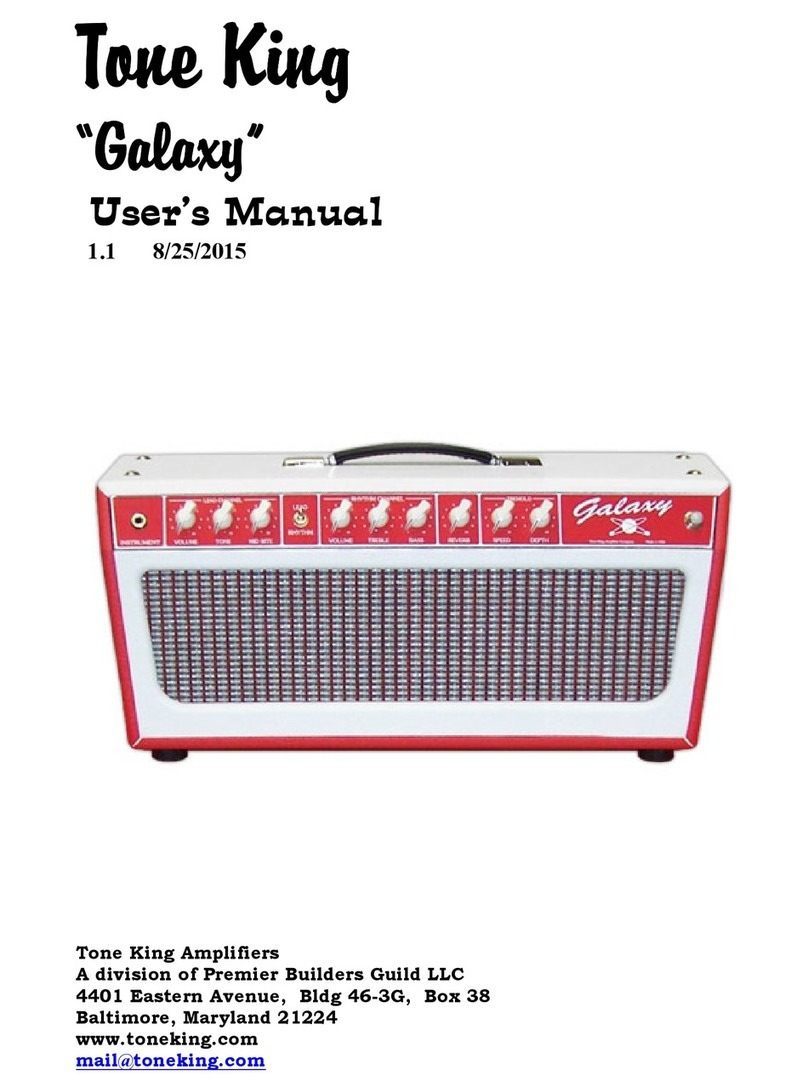
Tone King
Tone King Galaxy User manual
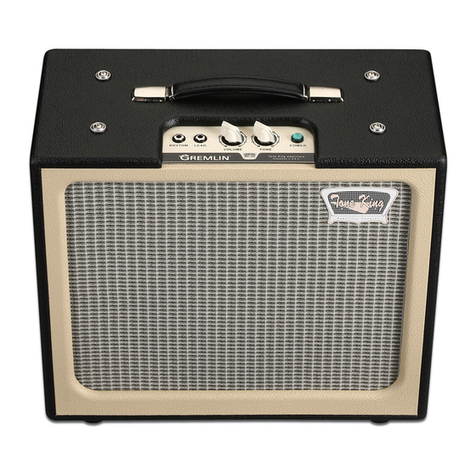
Tone King
Tone King Gremlin User manual
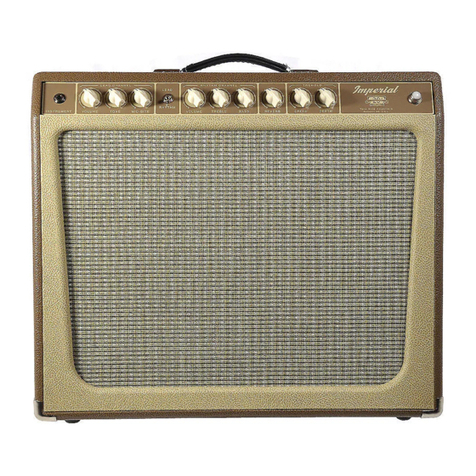
Tone King
Tone King 20th Anniversary Imperial User manual

Tone King
Tone King Falcon Grande User manual

Tone King
Tone King Majesty 45 User manual
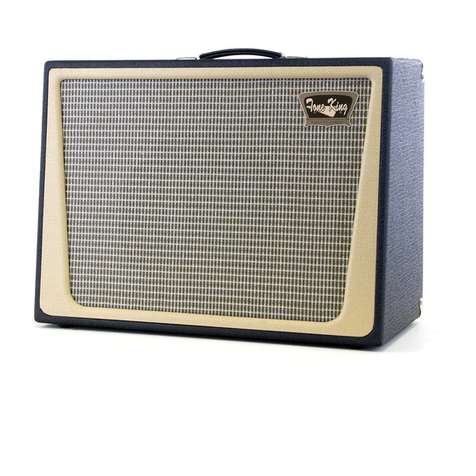
Tone King
Tone King Metropolitan User manual

